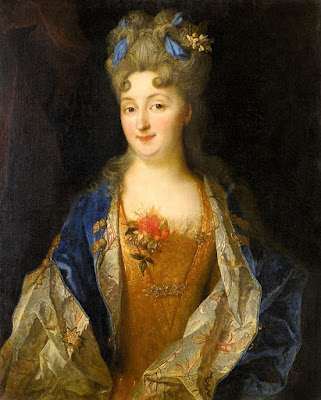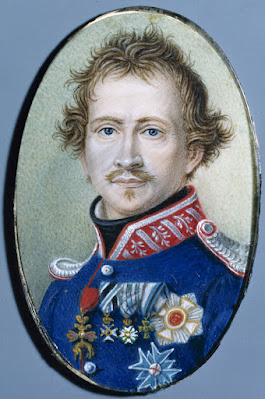-Portrait-of-a-Woman-1510-oil-on-panel-Royal-Museum-of-Fine-Arts-Antwerp.jpg) |
| Conrad Faber von Creuznach Portrait of a Woman 1510 oil on panel Royal Museum of Fine Arts, Antwerp |
 |
| attributed to Bernard van Orley Charles V, Holy Roman Emperor ca. 1520 oil on panel Galleria Borghese, Rome |
 |
| Monogrammist HB Portrait of Anna von Winssen with her Child 1528 oil on panel Herzog Anton Ulrich Museum, Braunschweig |
 |
| Antonis Mor and workshop Portrait of a Man 1561 oil on canvas Mauritshuis, The Hague |
-Portrait-of-Katharina-von-Hatzfeld-1587-oil-on-panel-National-Museum-Warsaw.jpg) |
| Hermann tom Ring Portrait of Katharina von Hatzfeld 1587 oil on panel National Museum, Warsaw |
 |
| Johannes Cornelisz Verspronck Portrait of a Young Woman 1647 oil on canvas Kunsthaus Zürich |
 |
| Diego Velázquez Portrait of the Infanta Margarita Teresa, later Holy Roman Empress 1656 oil on canvas Kunsthistorisches Museum, Vienna |
 |
| Isaac Luttichuys Portrait of a Woman ca. 1662 oil on canvas High Museum of Art, Atlanta |
 |
| Nicolas de Largillière Portrait of a Woman ca. 1690-95 oil on canvas Musée des Beaux-Arts de Pau |
 |
| Rosalba Carriera Half-Length Portrait of a Woman before 1757 pastel on paper Gemäldegalerie Alte Meister, Dresden |
 |
| Joshua Reynolds Portrait of a Woman ca. 1760-70 oil on canvas Hamburger Kunsthalle |
 |
| Wilhelm Böttner Portrait of Caroline von Schlotheim 1788 oil on canvas Museumslandschaft Hessen Kassel |
 |
| Anonymous German Miniature-Painter King Ludwig I of Bavaria ca. 1820 watercolor on ivory Gemäldegalerie Alte Meister, Dresden |
 |
| Thomas Lawrence Portrait of the Honourable Mrs Seymour Bathurst 1828 oil on canvas Dallas Museum of Art |
 |
| Jan Adam Kruseman Portrait of Henriette Eclasina Geertruida Vinju Heije 1834 oil on canvas Teylers Museum, Haarlem |
-1838-oil-on-canvas-Scottish-National-Gallery-Edinburgh.jpg) |
| Andrew Geddes Portrait of Hannah Fry (Mrs Harris Prendergast) 1838 oil on canvas Scottish National Gallery, Edinburgh |
The Ethiopians decided to spare them and take them back alive. This was their first catch, as it were, and it was a fine one for them to present to their king: on the one hand, the most prized of the satrap's possessions (for eunuchs act as eyes and ears to the courts of Persian royalty, since they have no children or family, love for whom might divide their loyalties, but are entirely dependent on him who places his trust in them); on the other, the young couple, who would be a gift to adorn the retinue and court of their king.
So without a moment's delay they led them away, after mounting them on horseback. Bagoas because he was hurt, Theagenes and Charikleia because their chains made them unable to keep up with the rapid pace that was set. The scene was like the preliminary appearance and introduction of the actors in the theater before the play begins;* strangers in a foreign land, prisoners in chains who a moment ago had been haunted by a vision of their own violent death, were now being not so much led as escorted in captive state, guarded by those who were soon to be their subjects. Such was the position of Theagenes and Charikleia.
* The technical terms used here (proanaphonesis, proeisodion) are obscure, and so the exact point of the comparison is unclear.
– Heliodorus, from The Aethiopica, or, Theagenes and Charikleia (3rd or 4th century AD), translated from Greek by J.R. Morgan (1989)